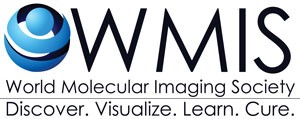Jochen Tillmanns  (1), Magdalena Schneider (2), Daniela Fraccarollo (1), Jan-Dieter Schmitto (3), Florian Länger (4), Dominik Richter (2), Johann Bauersachs (1), Samuel Samnick (2)
(1), Magdalena Schneider (2), Daniela Fraccarollo (1), Jan-Dieter Schmitto (3), Florian Länger (4), Dominik Richter (2), Johann Bauersachs (1), Samuel Samnick (2)
1. Department of Cardiology and Angiology, Hannover Medical School, Carl-Neuberg-Str. 1, 30625, Hannover, Germany
2. Department of Nuclear Medicine, University Hospital Wurzburg, 97080, Wurzburg, Germany
3. Department of Cardiothoracic Surgery, Hannover Medical School, 30625, Hannover, Germany
4. Institute for Pathology, Hannover Medical School, 30625, Hannover, Germany
Abstract
Purpose
Peptides containing the asparagine-glycine-arginine (NGR) motif bind to aminopeptidase N (CD13), which is expressed on inflammatory cells, endothelial cells, and fibroblasts. It is unclear whether radiolabeled NGR-containing tracers could be used for in vivo imaging of the early wound-healing phase after myocardial infarction (MI) using positron emission tomography (PET).
Procedures
Uptake of novel tracer [68Ga]NGR was assessed together with [68Ga]arginine-glycine-aspartic acid ([68Ga]RGD) and 2-deoxy-2-[18 F]fluoro-d-glucose after myocardial ischemia/reperfusion (MI/R) injury using μ-PET and autoradiography, and relative expressions of CD13 and integrin β3 were assessed in fibroblasts, inflammatory cells, and endothelial cells by immunohistochemistry.
Results
In the infarcted myocardium, uptake of [68Ga]NGR was maximal from days 3 to 7 after MI/R, and correlated with fibroblast and inflammatory cell infiltration as well as [68Ga]RGD uptake.
Conclusions
[68Ga]NGR allows noninvasive and sequential determination of CD13 expression in fibroblasts and inflammatory cells by PET. This will facilitate monitoring of CD13 in the individual wound healing processes, allowing patient-specific therapies to improve outcome after MI.
